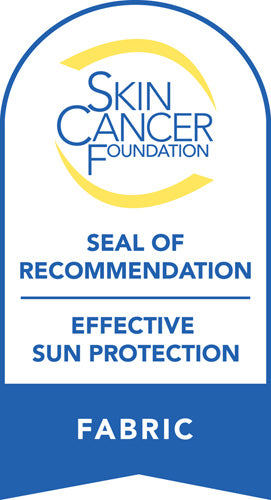Stage 1 Melanoma: Important Awareness, Prevention, and Treatment Tips
Stage 1 Melanoma: Important Awareness, Prevention, and Treatment Tips
The American Cancer Society estimates that nearly 105,000 new cases of melanoma are expected to be diagnosed in the U.S. in 2025. Melanoma can start as a small spot but may turn serious if not caught early.
Stage 1 melanoma is the earliest form and is often highly treatable when found quickly. Many people are unaware of the warning signs or how to lower their risk.
Today, we're taking a closer look at stage 1 melanoma, including its causes, early detection tips, prevention strategies, and more.
What Is Stage 1 Melanoma?
Stage 1 melanoma is the earliest stage of this type of skin cancer. The cancer cells are still close to where they started and haven't spread deeper or to other parts of the body.
At this stage, the melanoma is small and often found only in the top layers of the skin. Catching it early often makes treatment simpler and more successful.
Doctors use something called the TNM system to help describe cancer. For stage 1 melanoma, the "T" stands for tumor thickness. In this case, the tumor is usually no thicker than 2 millimeters.
The "N" stands for lymph nodes. At stage 1, the cancer hasn't spread to any nearby lymph nodes. The "M" refers to metastasis, which means whether cancer has moved to other parts of the body. At this stage, it hasn't.
Common Causes and Risk Factors
Melanoma can happen to anyone, but some people have a higher chance of developing this type of cancer. There are three main things that raise the chances of getting melanoma:
- Too much exposure to ultraviolet (UV) light
- Family history or genetic factors
- Skin type and other personal traits
Too Much Exposure to Ultraviolet (UV) Light
UV rays from the sun and tanning beds are one of the biggest causes of melanoma. Spending time in direct sunlight without protection can damage skin cells and lead to changes that may turn into cancer.
People who've had more than one blistering sunburn, especially during childhood, are at higher risk. Using tanning beds, even for a short time, also increases the chance of developing skin cancer.
Family History or Genetic Factors
Melanoma can sometimes run in families. If a parent, brother, sister, or child has had melanoma, your risk may be higher.
Some people inherit changes in their DNA that make it more likely for skin cells to grow out of control. These inherited traits may not cause cancer on their own, but when combined with sun exposure, the risk grows.
Skin Type and Other Personal Traits
Fair skin, light hair, and light eyes are often linked to a higher risk of melanoma. This is because lighter skin has less melanin, which helps block UV rays.
People with lots of moles, or moles that are large or oddly shaped, may also be at greater risk. Age plays a role, too. Melanoma is more common in older adults, but it can still happen in young people.
Signs and Symptoms to Watch For
Melanoma often starts with small changes in your skin. These changes can be easy to miss if you're not looking for them.
That's why learning the warning signs is an important part of skin cancer awareness and early melanoma detection. There are three main signs to pay attention to when checking your skin:
- Changes in moles or spots that follow the ABCDE rule
- New growths that look unusual or stand out from others
- Skin that itches, bleeds, or feels different than before
Changes In Moles or Spots That Follow the ABCDE Rule
One of the most common ways to spot early melanoma is by using the ABCDE rule. This stands for asymmetry, border, color, diameter, and evolving. A mole that's not evenly shaped, has jagged edges, or shows more than one color might be a concern.
If it's larger than a pencil eraser or has changed in any way over time, it should be looked at by a doctor. These signs can point to something more serious than an ordinary mole.
New Growths That Look Unusual or Stand Out From Others
Sometimes melanoma shows up as a new spot rather than a change in an old one. These growths often look different from your other moles.
They may be darker or oddly shaped. People with lots of moles should pay attention to anything that doesn't match the rest. A mole that stands out can be a sign that something's wrong.
Skin That Itches, Bleeds, Or Feels Different Than Before
Not all changes are about how a mole looks. If a spot on your skin starts to itch, bleed, or feel sore without healing, that could be a warning sign.
These symptoms might seem small, but they can be linked to early melanoma. It's better to have a doctor check it than to wait and see.
The Importance of Early Melanoma Detection
Early melanoma detection gives people the best chance to treat the cancer before it spreads. Melanoma can move quickly, but catching it in the early stages, like stage 1, often leads to better results.
Regular skin checks and awareness can help people notice problems sooner rather than later.
There are three main reasons why early detection makes a difference:
- Treatment is usually easier and more successful
- Long-term health risks are lower
- Regular skin exams help catch changes before they get worse
Treatment Is Usually Easier and More Successful
When melanoma is found at stage 1, it usually means the cancer is small and hasn't moved past the upper layers of skin. In many cases, it can be removed with a single surgery.
People who get treatment early often recover fully and don't need radiation or chemotherapy. Waiting too long can lead to more advanced stages, where treatment becomes more complicated and may affect more of the body.
Long-Term Health Risks Are Lower
Melanoma can become dangerous if it spreads to other parts of the body. Early melanoma detection gives doctors a better chance to stop that from happening.
When treated at an early stage, the chances of the cancer coming back are lower. This means fewer long-term health problems and a higher quality of life after treatment.
Regular Skin Exams Help Catch Changes Before They Get Worse
One of the best ways to spot melanoma early is by checking your skin often. You don't need special tools to do this.
Just look for spots that change, itch, or bleed. It helps to do this once a month and to see a dermatologist once a year, especially if you have a higher risk. These habits can lead to faster diagnosis and better outcomes.
Tips for Melanoma Prevention
While no one can control every risk, there are steps that make melanoma less likely. Small daily habits can lower your exposure to UV rays and protect your skin over time.
Learning how to prevent melanoma isn't hard, and the right approach can start at any age. There are three main ways to lower your risk:
- Use sunscreen every day, even when it's cloudy
- Wear sun-protective clothing when outside
- Stay out of the sun during peak hours
Use Sunscreen Every Day, Even When It's Cloudy
Sunscreen helps block harmful UV rays that damage skin cells. Use one with at least SPF 30 and reapply it every two hours.
You'll still need it even if the sky is overcast, since UV rays can pass through clouds. It's easy to forget sunscreen in the winter, but snow and water can reflect sunlight, too. Getting into the habit of wearing it daily can support long-term skin health and help prevent skin cancer.
Wear Sun-Protective Clothing When Outside
Clothing can add an extra layer of protection that sunscreen may miss. Wide-brimmed hats, long sleeves, and sunglasses can block out the sun without much effort.
Some clothing is made with special fabric that offers more UV protection. This can be helpful for people who work or spend a lot of time outside. Sun protective clothing doesn't take much thought once it becomes part of your daily routine.
Stay Out of the Sun During Peak Hours
The sun's rays are strongest between 10 a.m. and 4 p.m. During these hours, your skin can burn faster, which increases the risk of damage over time.
If you can, try to plan outside activities early in the morning or later in the afternoon. If you must be out during peak times, find shade or bring a hat or umbrella with you.
Skin Cancer Awareness
Stage 1 melanoma is often treatable when caught early, but prevention and awareness are just as important. Daily habits like using sunscreen and wearing sun-protective clothing can make a difference. Stay alert, understand the signs, and support others.
After spotting sun damage on my arms, I discovered that regular shirts block only 5% of UV rays. I couldn't find sun-protective clothing that met my needs, so I created BloqUV.
Our lightweight, chemical-free fabric, BloqTek, offers UPF 50+ and blocks 98% of UVA/UVB rays. Fifteen years later, we remain committed to skin protection and melanoma awareness.
Get in touch today to find out how we can help with your skin protection!



